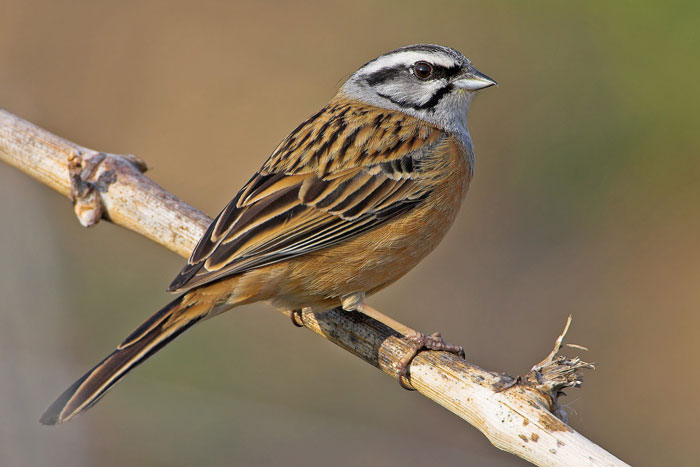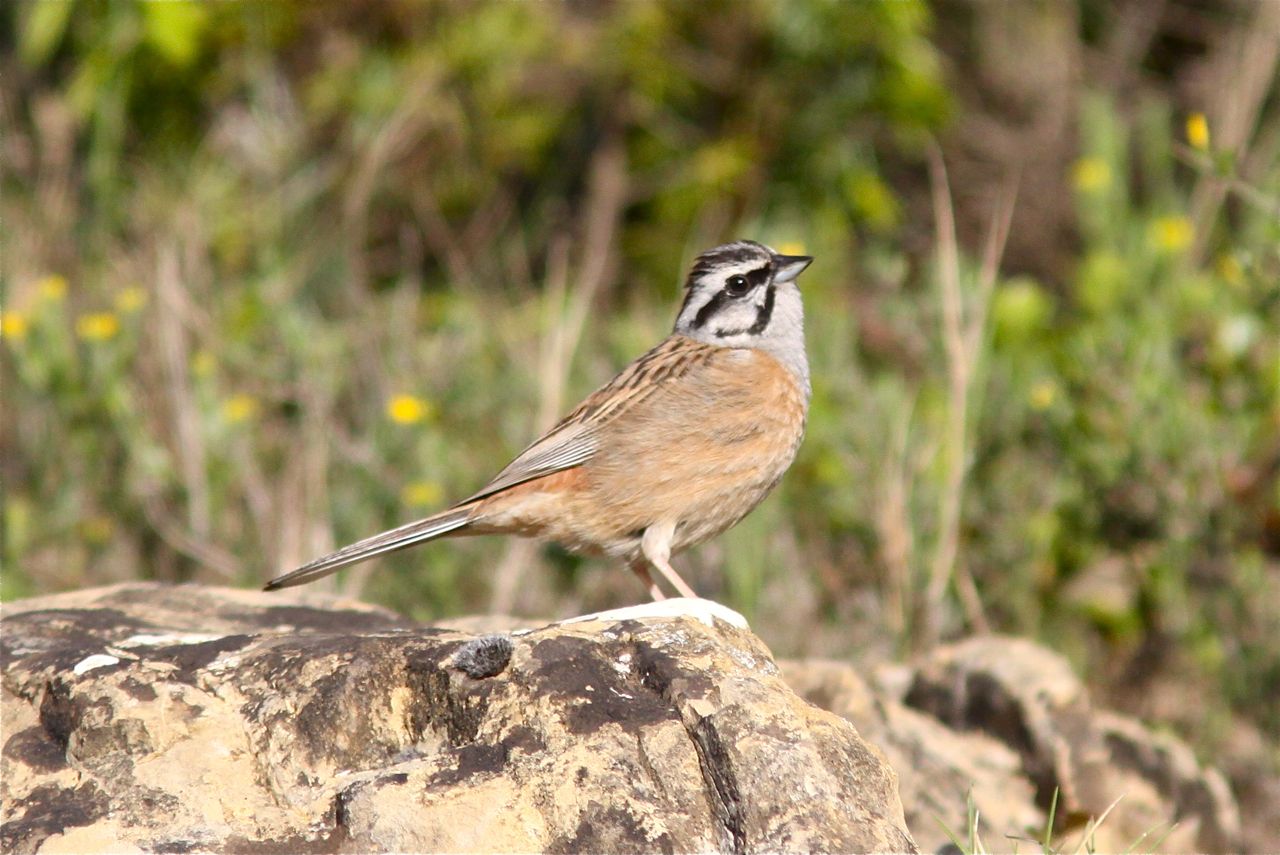
Emberiza cia
TAXONOMY
Emberiza cia Linnaeus, 1766, Austria. Ten subspecies.
OTHER COMMON NAMES
French: Bruant fou; German: Zippammer; Spanish: Escribano
Montesino.
PHYSICAL CHARACTERISTICS
6.3 in (16 cm); 0.7–0.9 oz (20–25 g). Sexes differ in color.
Males have a gray, black, and white patterned head with a gray
throat, a chestnut-streaked back, a rufous breast, belly, and
rump, and a white-edged tail. Females and juveniles are much
duller.
DISTRIBUTION
Breeds from southern France and southern Germany south to
Spain, Portugal, North Africa, Italy, and Greece, Turkey,
north and central Iran, southern Turkistan, northwest India,
western Himalayas, and western Nepal. Some birds move
south or to lower elevation in winter.
HABITAT
Inhabit dry, rocky hillsides, and, in winter, weedy or grassy
areas with hedges and trees. They often roost in trees.
BEHAVIOR
Territorial during breeding season. They defend their territory
with song, which is emitted from a perch on the top of a bush
or rock. Outside of the breeding season they occur singly or in
small groups. Wintering flocks form in late summer and may
contain other Emberiza species.
FEEDING ECOLOGY AND DIET
Primarily feed on the ground among rocks and shrubs. In summer
they take insects and other invertebrates (including small
snails), as well as seeds. Winter diet is principally seeds, which
they find in pastures, cultivated land, and gardens.
REPRODUCTIVE BIOLOGY
Monogamous. Eggs are laid from May through July. The nest
is placed on or close to the ground and is well concealed in
vegetation. They lay three to six (usually four to five) eggs; incubation
lasts 12–14 days, and young fledge at 10–13 days of
age. Both parents feed the young.
CONSERVATION STATUS
Not threatened.
SIGNIFICANCE TO HUMANS
None known.
Other popular Animals
Photo Gallery of - Rock bunting




 Animalia Life
Animalia Life